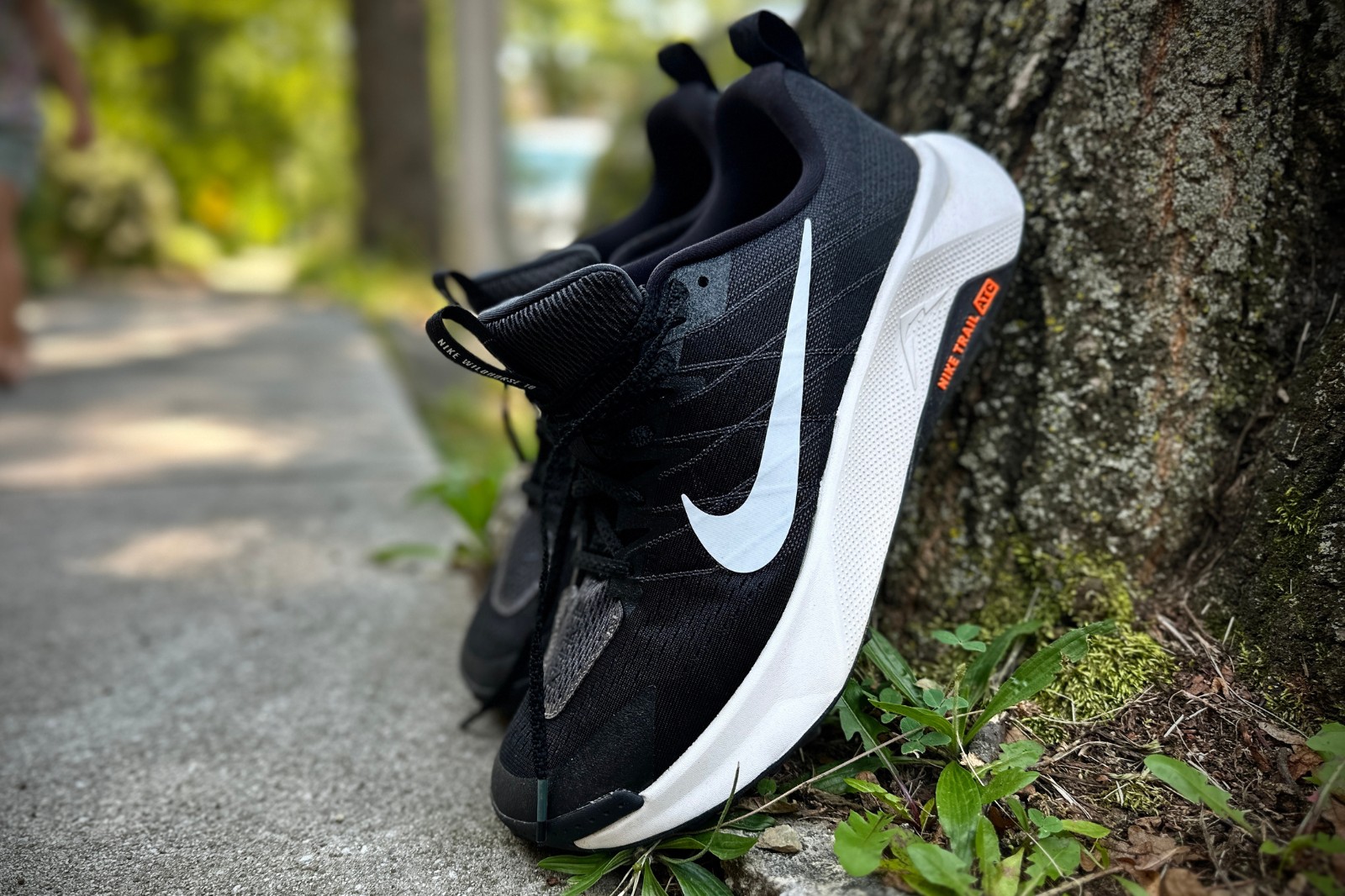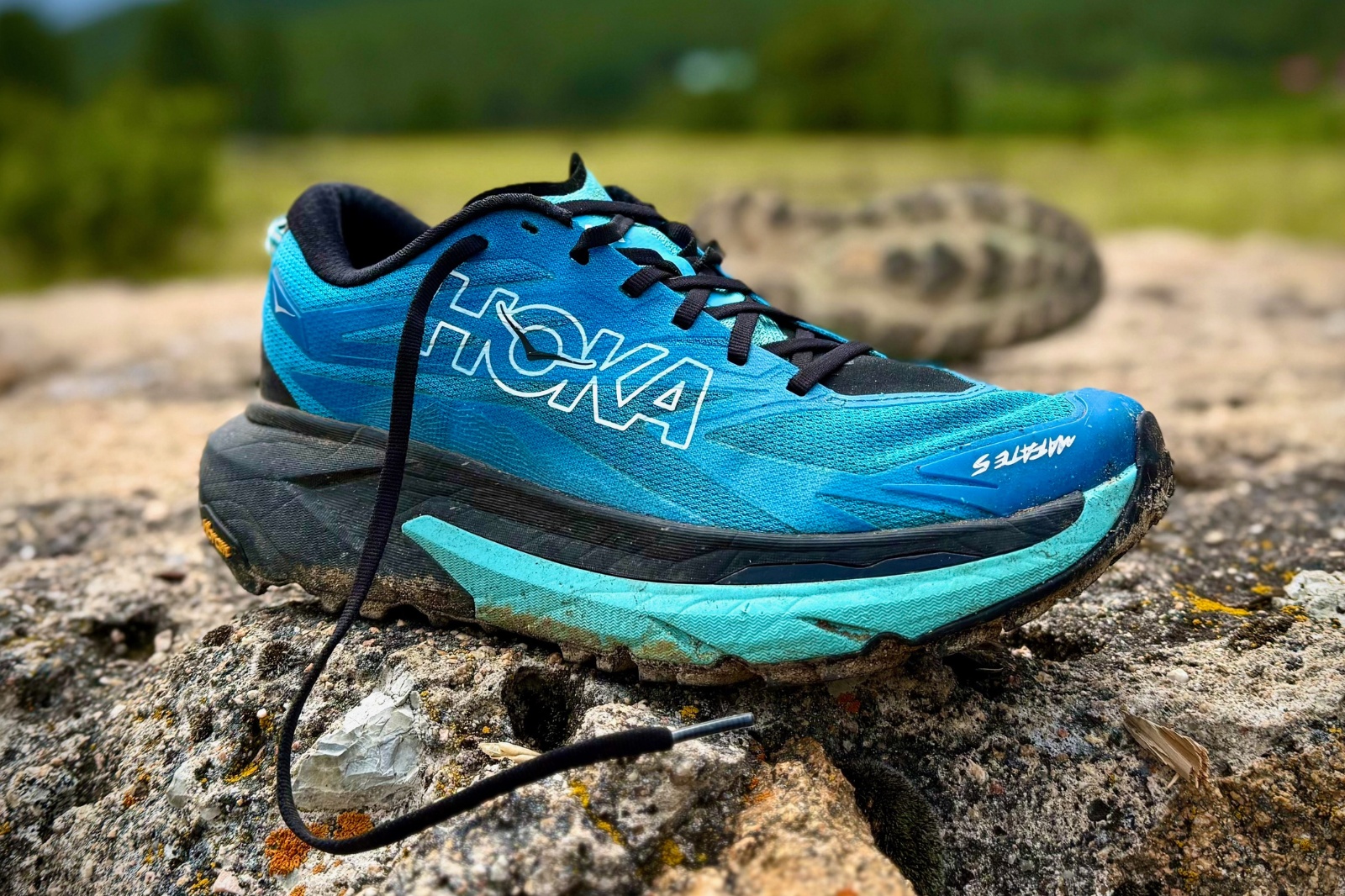

We independently review everything we recommend. When you buy through our links, we may earn a commission.
A Swiss brand known for its clean design, firm cushioning, and distinctive CloudTec geometry. Once better at aesthetics than performance, On has started to catch up—delivering shoes that now look fast and run well too.
On offers a full lineup of road trainers, plated racers, and light-to-moderate trail shoes, with growing focus on super trainers and race-day performance.
If we missed a favorite of yours, let us know in the comments.

As a first-year law student, 2016 was not my best year as a runner. My early morning miles were replaced by strong coffee and casebooks, but running hadn’t completely escaped my life. My wife had just qualified for the Boston Marathon, so I was still thankfully immersed in gear and run culture.
Sometime that winter, we drove down to Boulder, Colo., from our home in Fort Collins to check out the Boulder Running Company. That was the first time I remember seeing On. The brand had only been around for a few years, launched in 2010 out of Switzerland by three founders—Caspar Coppetti, David Allemann, and Olivier Bernhard. Bernhard had been a multi-time world duathlon champion and five-time Ironman Switzerland winner before setting out to find what he called the “perfect running sensation.” What followed was a series of prototypes, initially constructed from garden hoses cut in half lengthwise and glued to an early version of the On Speedboard. The entire package embodied a new idea: shoes that made you feel like you were “running on clouds.”
The name was simple—just “On” (not QC)—but the idea was bold. Open-air pods underfoot, a totally different midsole design, and a silhouette that didn’t look like anything else on the wall. The early models weren’t exactly soft, but they got people’s attention. A month after the brand officially launched, their prototype won the ISPO Brandnew Award. Five months later, On shoes were on retail shelves.
Back in Boulder, I didn’t know any of that. I just remember the design standing out. Whether they ran well was mostly irrelevant at the time— I wasn’t doing enough running to find out. But I still brought a pair home.
In the years that followed, I found myself returning to On not necessarily for the performance, but because they crossed over easily into everyday life. Once a pair hit 300 miles, I’d recycle them into my casual rotation. My Altras weren’t pulling that off. That was early On— sharp design, firm midsoles, and just enough edge to stand out in the crowd.
Outside of my own personal experience, the team here at Believe in the Run was reviewing the shoes all along. There were ones we hated (On Cloudswift) and others we didn’t enjoy. But eventually, things began to change. Over the last few years, On has built out a full lineup—road trainers, plated racers, super-trainers, and a growing trail category. Fit has improved. The foams have evolved. Some models still feel more concept than execution, but the brand is no longer just a style piece with a clever logo. Thanks to improved materials and overall design, the shoes now run well enough to earn their place on the start line—and not just as a fashion statement at the airport.
While I’ve personally tried several of these models, this list is a compilation of the preferred picks from the entire Believe in the Run team.
There’s more coming down the line, including the On Cloudboom Max, a shoe meant for 3:30 marathoners and slower. So check back often as we’ll update this evergreen list as more models are reviewed.
On’s proprietary midsole foam found across most models. It’s firm, durable, and designed for responsiveness over softness. Often paired with CloudTec pods for impact absorption.
A PEBA-based superfoam used in On’s performance shoes, including the Cloudboom Echo, Cloudmonster Hyper, and Cloudultra Pro. More energetic than standard Helion, but still firmer than other PEBA foams on the market.
The pod-based geometry used across On’s lineup. Each “cloud” compresses independently to absorb impact and assist with forward motion. In newer models, pods are less pronounced or fully integrated into the midsole.
An evolved version of CloudTec. Found in the Cloudsurfer 2 and Cloudsurfer Trail, Phase geometry compresses in a sequenced pattern to create a smoother, more fluid transition through the stride.
On’s name for its internal plates. Materials and stiffness vary across models, from carbon fiber in race shoes to flexible nylon in trail offerings. Often sandwiched between midsole layers to provide stability or propulsion.
On’s trail-specific outsole rubber. Used in models like the Cloudultra Pro and Cloudsurfer Trail, it provides moderate traction on dirt, gravel, and light technical terrain.
Miles and miles with maximum cushioning
10.5 oz. (300 g) for a US M9,
8.1 oz. (230 g) for a US W7.5
39 mm in heel, 33 mm in forefoot (6 mm drop)
The Cloudmonster 2 carries On’s most recognizable silhouette — high stack, bold geometry, and a design language that leans more modern sculpture than everyday trainer. But beneath the shape, the ride is more conventional. The dual-density Helion foam adds some give underfoot, especially in the forefoot, and the Speedboard provides just enough structure to keep things feeling efficient. It’s firm, especially for the category, but it’s not harsh. You’re not floating, but you’re protected.
Where it falters is in fit and weight. The upper feels overly spacious, especially through the toebox, and the sizing can run long even for those familiar with On’s inconsistencies. It’s heavy, too, and that weight starts to matter once the run gets long. Still, for runners who like their shoes on the stable, structured side of things and don’t mind a little extra volume underfoot, the Cloudmonster 2 gets the job done. Just don’t expect it to surprise you.
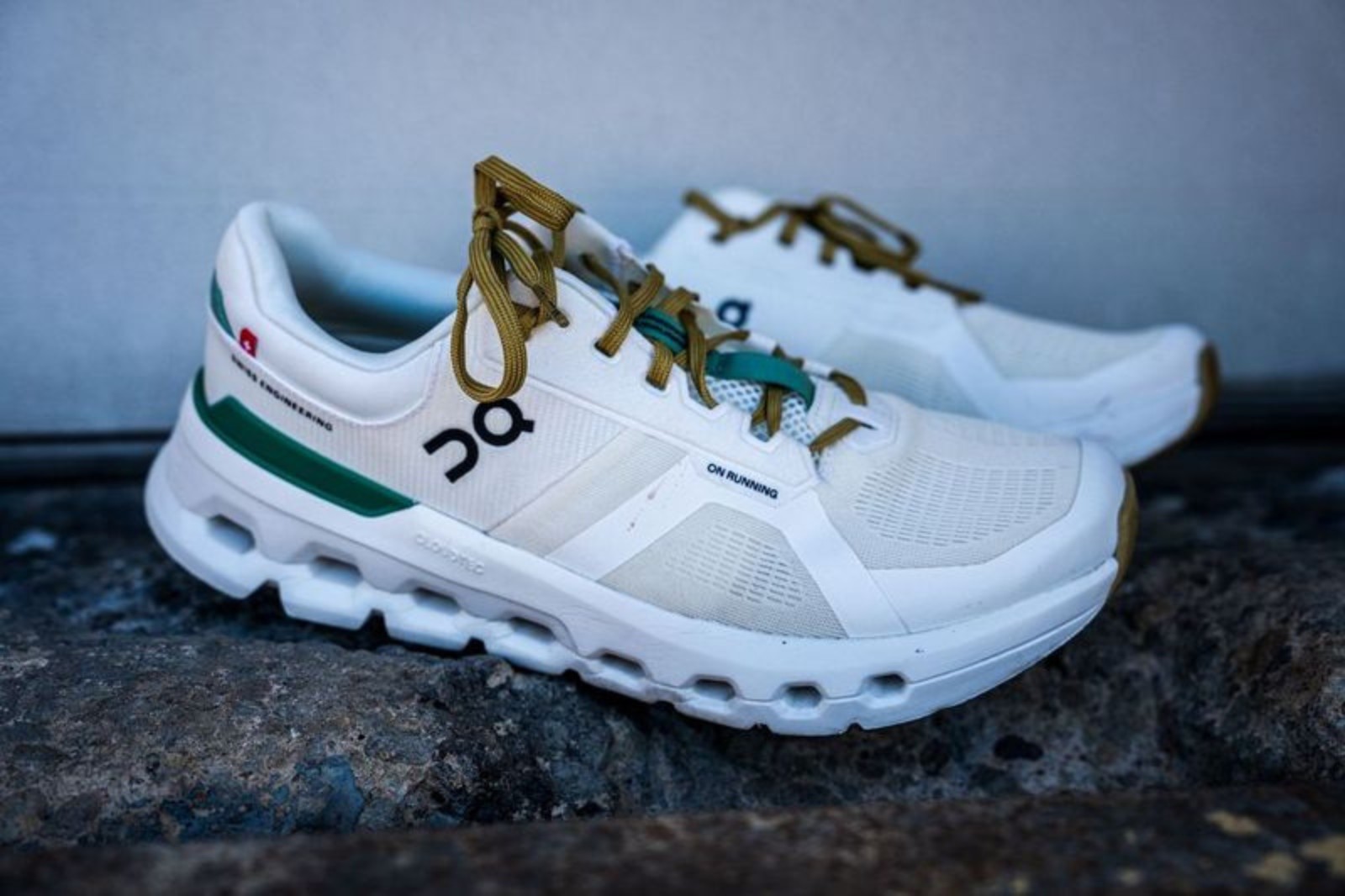
Road runs with light stability
9.7 oz. (277 g) for a US M9,
8.5 oz. (240 g) for a US W8
31 mm in heel, 21 mm in forefoot (10 mm drop)
If the Cloudmonster 2 feels a little oversized and blunt, the Cloudrunner 2 goes the other direction. It’s more grounded, more restrained. There’s no drama in the ride — just a consistent, stable ride that makes it easy to forget what’s on your feet. Helion foam keeps the ride balanced, and the heel clip and broad platform offer quiet structure for those who want it.
The upper is straightforward and comfortable, with improved lockdown over the previous version. It’s not flashy, but it works — and that’s exactly the point. For easy miles or new runners looking for support without overcorrection, the Cloudrunner 2 quietly earns its place.

Long trail runs and races
9.3 oz. (265 g) for a US M9,
8.3 oz. (235 g) for a US W7
38.5 mm in heel, 32.5 mm in forefoot (6 mm drop)
Things shift when you leave the road. And for the first time, On’s trail offering feels like more than a design exercise. The Cloudultra Pro is the brand’s most complete trail shoe to date, pairing its race-day Helion HF midsole with a nylon plate and confident Missiongrip outsole underfoot. It’s still firm, but the balance is better. The rocker feels natural, and the ride holds its shape over long, runnable efforts.
The fit is secure without overdoing it, and the upper finds a nice middle ground between structure and breathability. It’s not ideal for highly technical terrain — stability in the forefoot is limited — but for smooth to moderate trails, the Cloudultra Pro finally puts On in the mix.
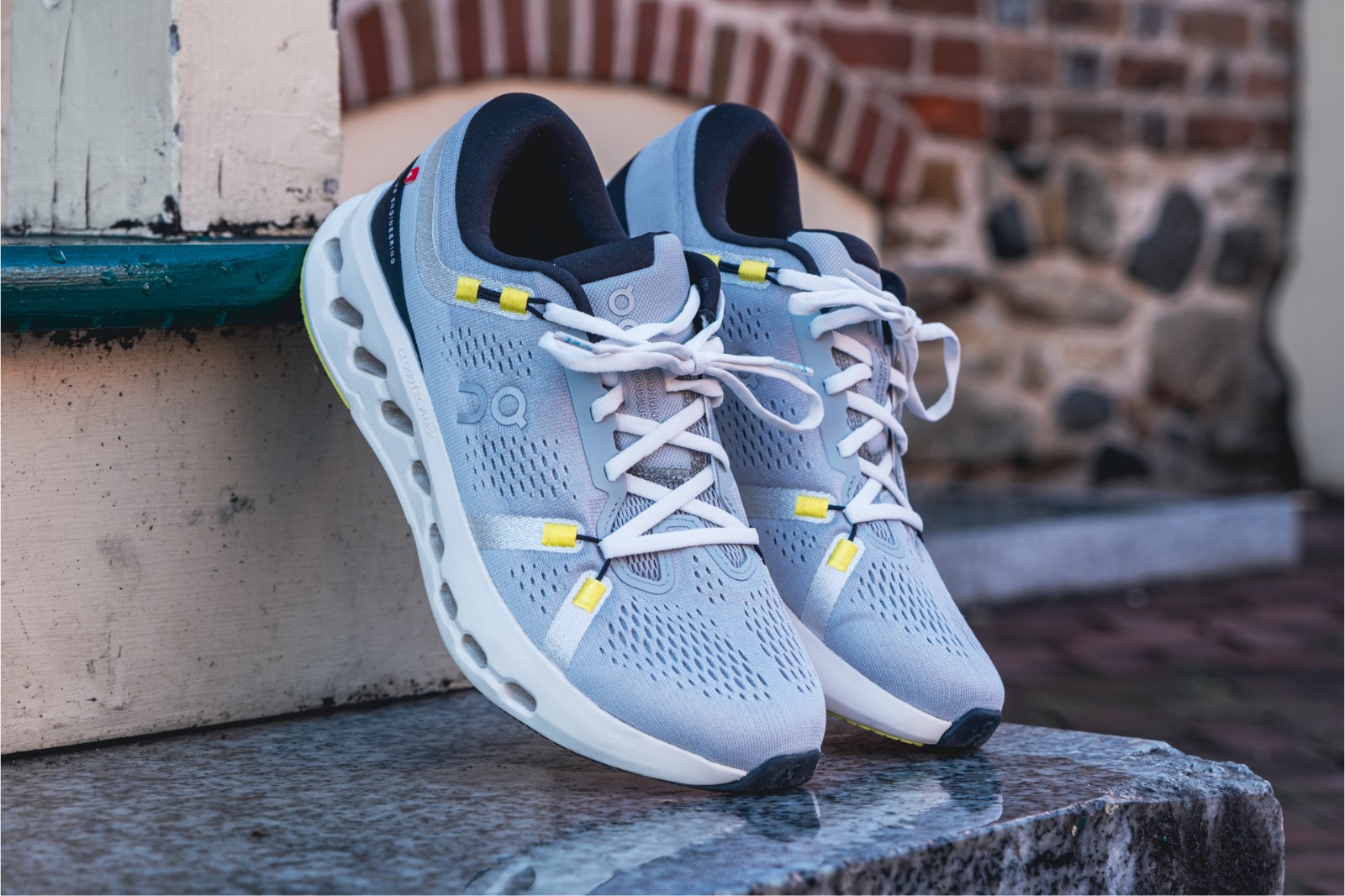
Shorter everyday runs
9.0 oz. (255 g) for a US M9,
7.8 oz. (221 g) for a US W7.5
37 mm in heel, 28 mm in forefoot (9 mm drop)
Coming back to the road, the Cloudsurfer 2 feels like a soft — er, firm — reset, both in design and performance. It carries forward the same midsole geometry as the Cloudeclipse and the original Cloudsurfer, but the ride is firmer this time. The softer feel from version one is gone, replaced by something more restrained. The rocker helps with turnover, but it never quite opens up.
That change might work for some — especially runners who found the original too mushy — but it also removes what made the shoe feel different. The upper is stiff, and the materials don’t match the $160 price tag. For shorter runs, walking, or casual use, it gets the job done. But compared to what else is out there, it’s hard to justify unless you’re already committed to the brand.
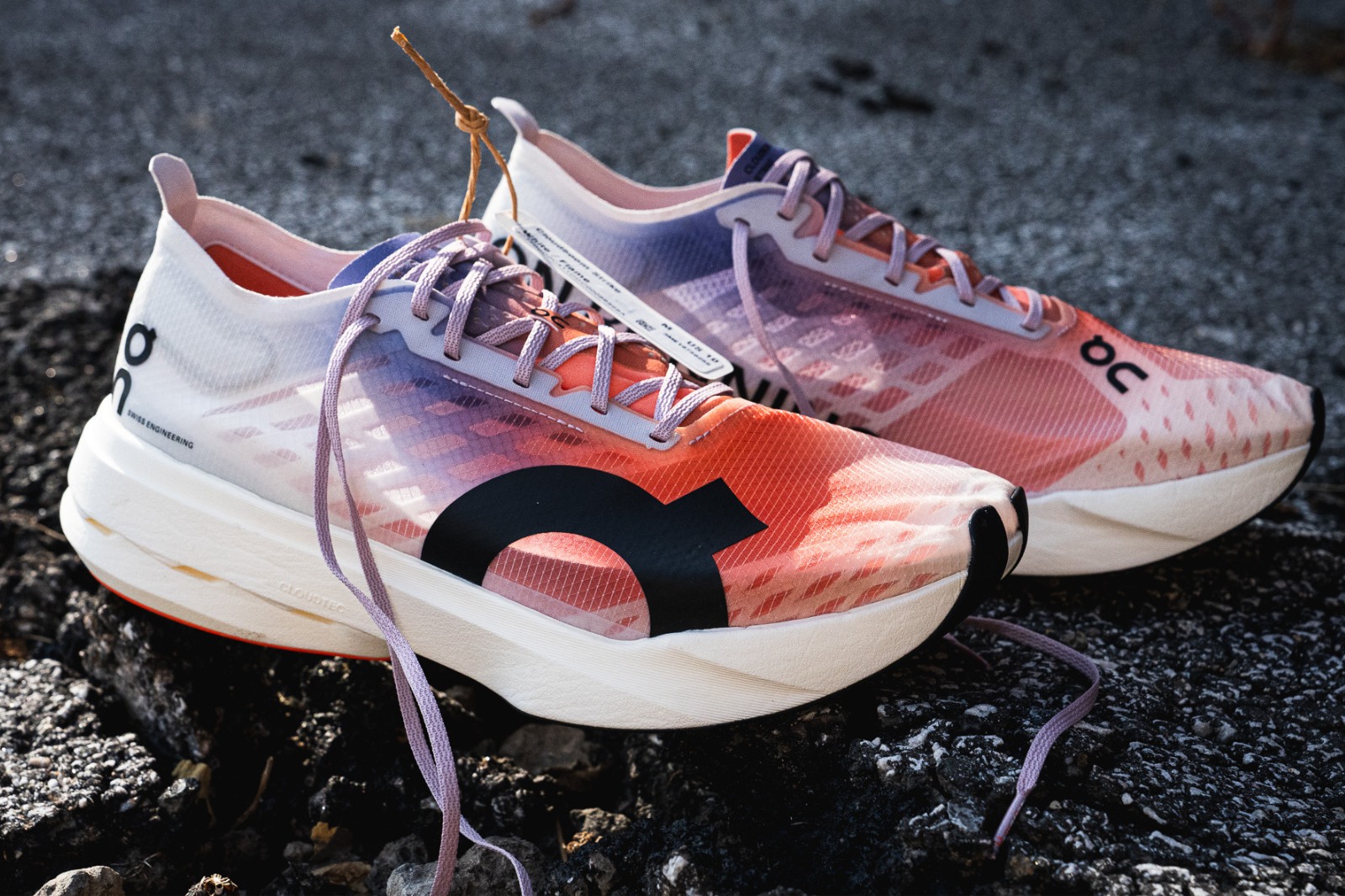
Race day up to the marathon
7.8 oz. (221 g) for a US M10.5
39.5 mm in heel, 35.5 mm in forefoot (4 mm drop)
If the Cloudsurfer 2 feels like On playing it safe, the Cloudboom Strike is the opposite. This is the brand at full tilt — lightweight, aggressive, and unapologetically fast. It’s a pure race-day tool, built with a drop-in Pebax midsole, a carbon plate, and just enough upper to keep you locked in. The ride feels direct and responsive, with a firm toe-off and a surprising amount of cushion under the forefoot.
But it’s a shoe that makes you work. The heel collar can be abrasive, the sizing inconsistent, and the platform unforgiving if your mechanics aren’t dialed. Still, for shorter races or faster sessions where you’re not trying to hide from the effort, the Strike delivers a clean, honest ride. It doesn’t float, but it moves.
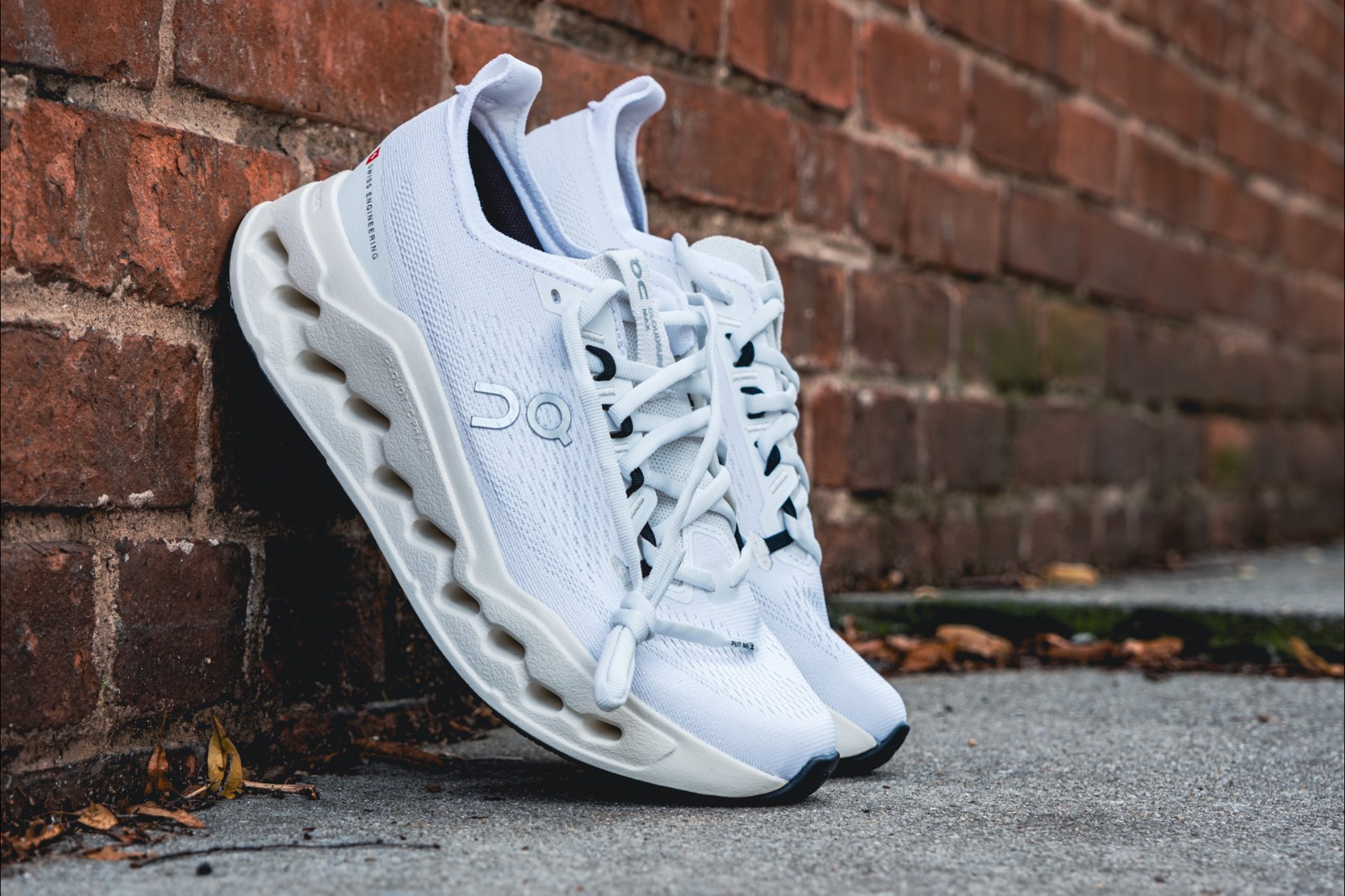
Max-stacked road miles
10.3 oz. (292 g) for a US M9,
9.2 oz. (262 g) for a US W7.5
37 mm in the heel, 31 in the forefoot (6 mm)
In a previous version of this list, this shoe might have gone by the name Cloudeclipse. Now, for once, On has made things easier on us. Rather than offering more types of clouds than either Asics or the National Weather Service, it’s let the eclipse pass in favor of catching a few more waves. Maybe that’s a long way to say it, but man, it’s nice to have some naming simplicity.
Honestly, just about all of the updates to the Cloudsurfer Max mirror those that hit the Cloudsurfer 2, which is to say that it’s… a little firm. It still looks gorgeous, and we still love the clean, simple colorways, but finding a role in our rotations has been an adjustment. But hey, at least the speedboard is gone, so we no longer have to worry about the scratching, grating sound as we run across gravel.
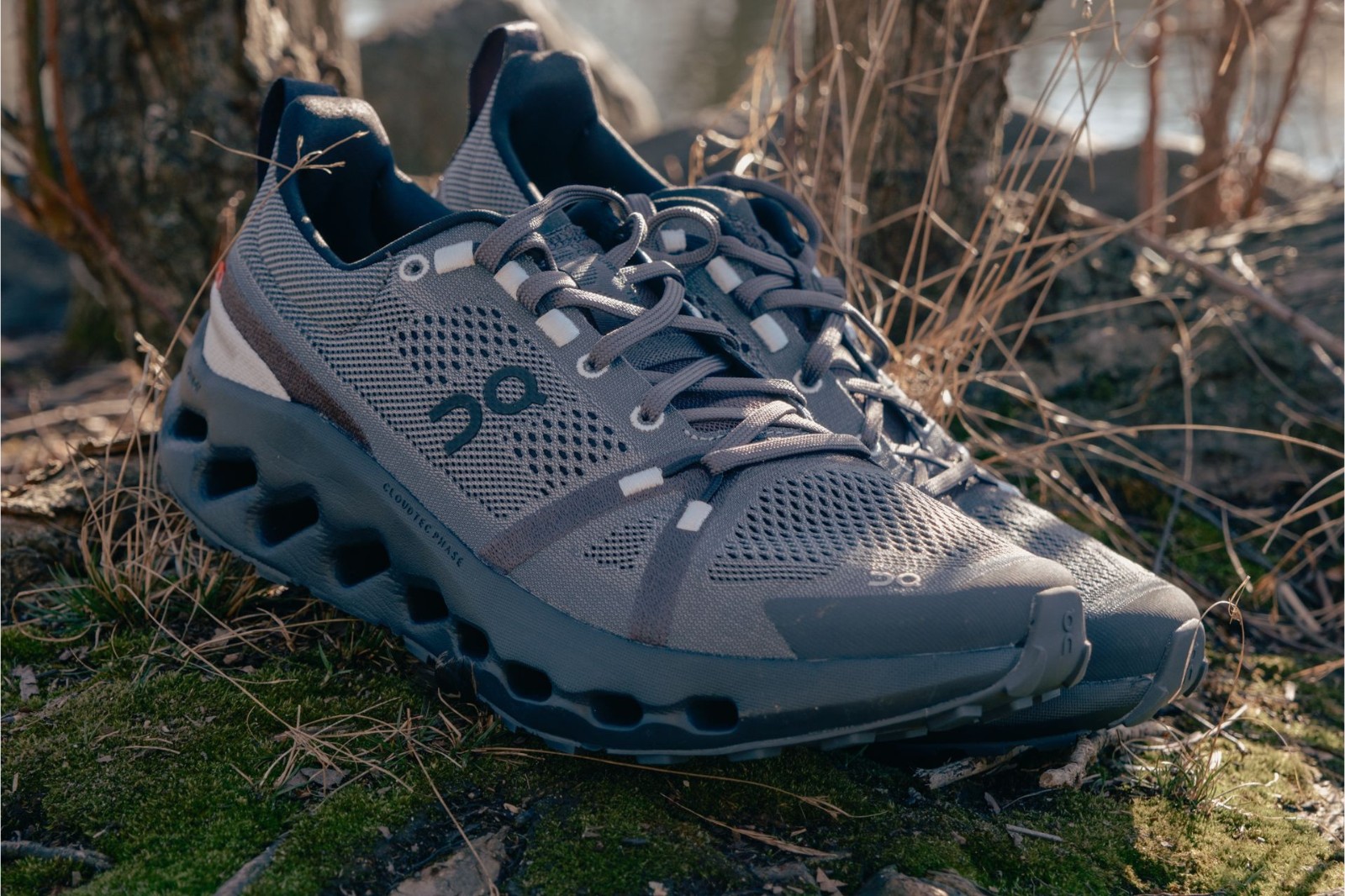
Tackling roads and light trails
9.6 oz. (272 g) for a US M9,
8.3 oz. (235 g) for a US W7.5
41 mm in heel, 34 mm in forefoot (7 mm drop)
The Cloudsurfer Trail brings the line full circle. It borrows the same midsole geometry as the road version but swaps in a Missiongrip outsole and weather-ready upper. The result is a hybrid shoe that leans more toward “light trail” than technical mountain use. On mellow dirt paths and gravel roads, the ride is smooth and stable, with just enough grip to keep things confident without overcommitting to terrain.
Durability may be a concern—the lugs are shallow, and the foam breaks in quickly—but for door-to-trail runners or those looking for something versatile, it fits the role well. It’s not a trail shoe for the long haul, but for the in-between miles, it feels easy to pick up and hard to dislike.
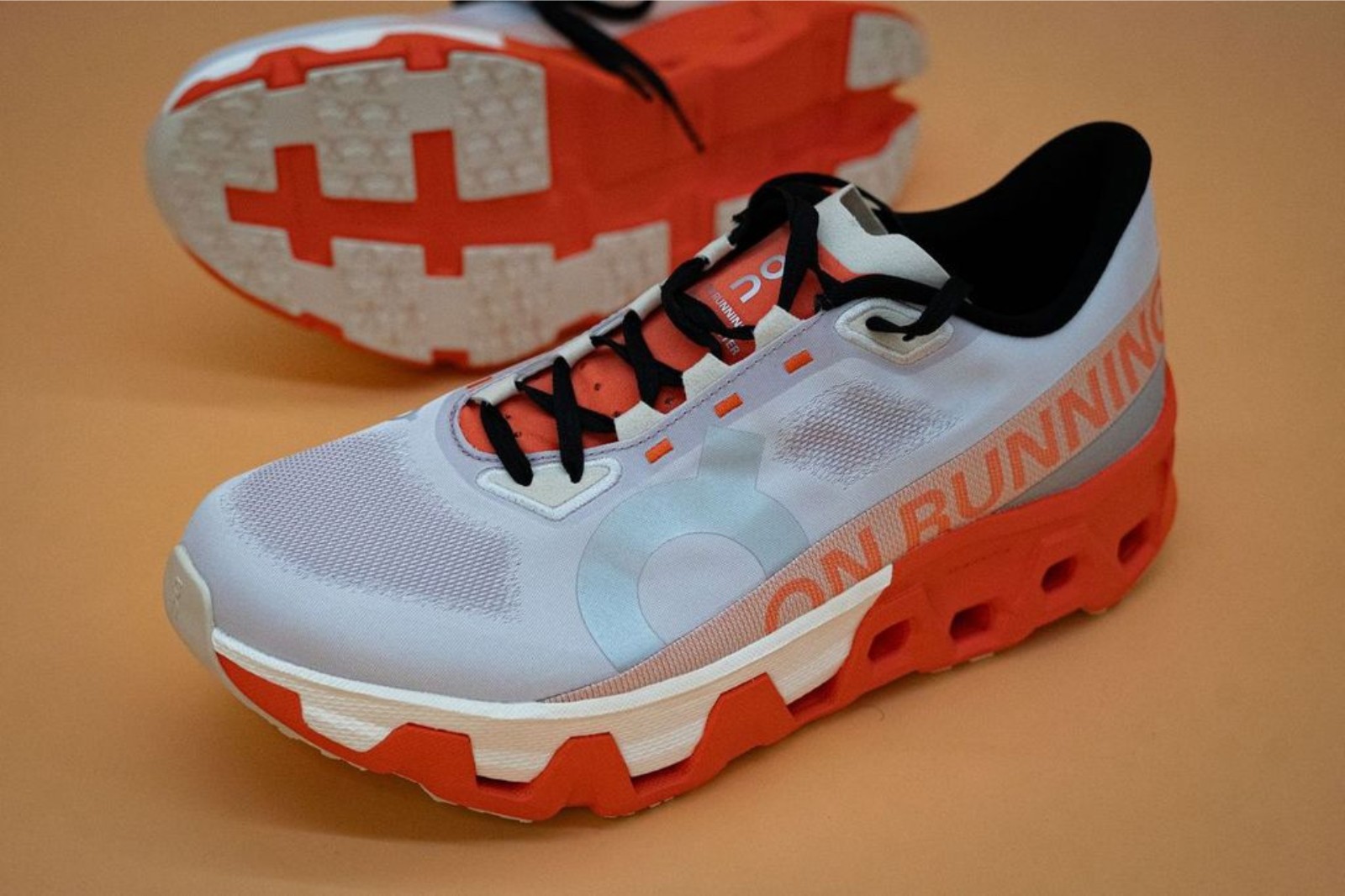
Daily training for On fans
9.3 oz. (265 g) for a US M9,
7.4 oz. (210 g) for a US W7.5
37.5 mm in heel, 31.5 in forefoot (6 mm drop)
If the Cloudsurfer Trail brought the lineup full circle, the Cloudmonster Hyper is a perfect example of what happens when you go further than that, again. If we’re being honest, it’s the first example of On going the “Max” route, just without the same naming convention.
It doesn’t add stack to the Cloudmonster so much as mix up the midsole formula, trading a bit of the forefoot Helion foam for a bigger chunk of Helion HF to, in theory, add some bounce and fun to the ride. Once again, it’s a stone-cold stunner of a shoe, and we’d put it up there with the best-looking trainers on the market, but you can probably imagine what comes next: Familiar On flaws.
Much like the standard Cloudmonster 2, it feels like On might have overcooked something. What was originally a pretty smooth ride now feels just a bit blocky, ultimately masking the presence of the Helion HF that we liked so much in the Cloudboom lineup. This is also one rather expensive daily trainer. It should be a supertrainer, but the lack of pop and excitement demotes it to a standard trainer through and through.
All of our recommendations come directly from our feet to your screen. We test countless running shoes here at Believe in the Run, and we let our reviews guide our decisions. However, we also consider other reviews and our BITR community, as not every runner has the same experiences. We also aim to stick with shoes that are currently available so you can give our recommendations a try.
Want to learn more about how our review process works? Check out this guide.
Have something to say? Leave a Comment

Based in northern Colorado, Bryce is a husband, dad, and attorney who finds his clarity on the run. What started as a way to stay fit has become a daily discipline rooted in faith, structure, and forward motion. He’s obsessed with training, gear, and early miles—and believes running is one of the best ways to show up for the rest of life.
More from Bryce